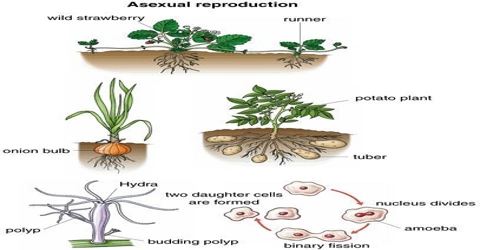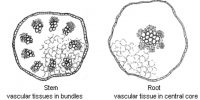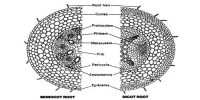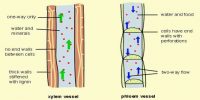Asexual reproduction
The direct method of reproduction in which the organism doesn’t need any companion and can reproduce through spore or from any part of the body to keep the existence of the species is called asexual reproduction.
Asexual reproduction is of two types:
1) Normal asexual reproduction
2) Artificial asexual reproduction
Normal asexual reproduction: An advantage of asexual reproduction is that the resulting plant will reach maturity faster. Plants that reproduce asexually are multicellular organisms, although the majority of asexual reproduction takes place within single-celled organisms.
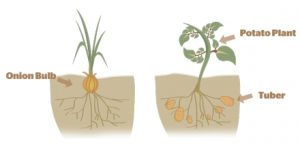
(i) Binary fission:- Bacteria, Yeast, Protococcus etc. unicellular organisms undergo binary fission producing two new individuals from each. In this process, the nucleus and the cytoplasm divide more or less equally into two parts following amitosis division.
(ii) Multiple fission:- In the adverse condition, some nuclei of plant cells divide repeatedly producing numerous daughters nuclei. Each nucleus being covered with cytoplasm forms an asexual reproductive cell or spore. The hard coat helps the spore to survive in the unfavorable condition to form daughter organisms after being released from the mother plants.
Example- Algae, Fungi etc.
(iii) Special types of Asexual spore:- Due to the environmental variation, most of the bacteria, fungi and algae form different types of spores, such as-
Fungi:
- Penicillium: Conidia or conidiospore.
- Mucor: Gonidia or Sporangiospore.
Algae:
- Chlamydomonas: Zoospore.
(iv) Normal vegetative reproduction:
- Formation of new plants from roots: Such as Sweet potato, Dahla etc.
- Formation of new plants from steams: Such as- Ginger, Tarmaric, Potato, Corn etc.
- Sucker or from special stem: Such – Banana, pine-apple etc.
- From leaf: Such as- Bryophyllum.
